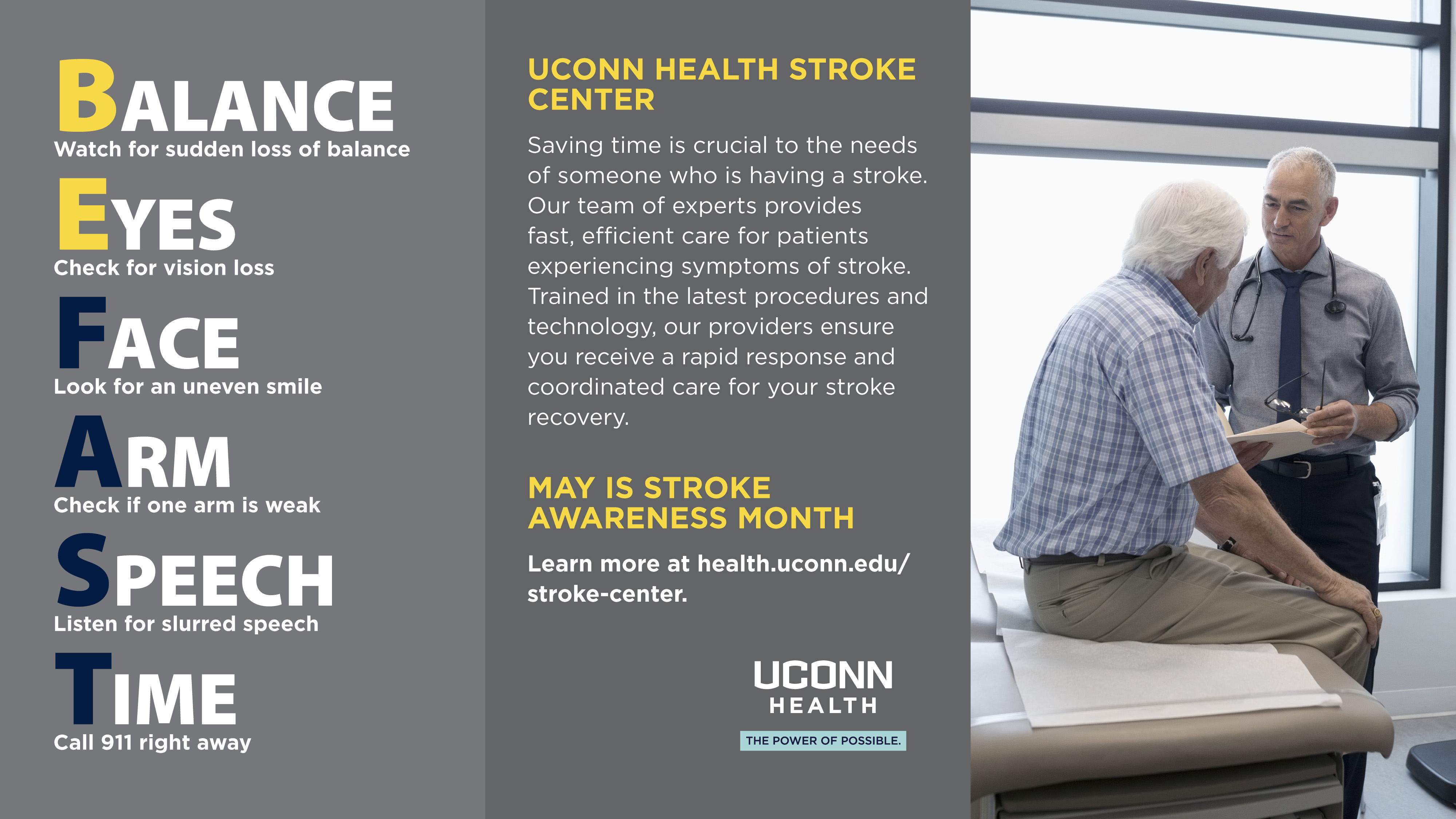A stroke in a dog may present as sudden weakness, loss of coordination, or collapse. It is important to recognize these signs and seek immediate veterinary care to prevent further complications.
Strokes in dogs can be caused by various factors, including blood clots, bleeding in the brain, or underlying health conditions. Common symptoms of a stroke in dogs include sudden loss of balance, head tilt, trouble walking, or circling in one direction.
Additionally, dogs may experience changes in behavior, such as confusion, disorientation, or sudden blindness. Understanding the signs of a stroke in dogs is crucial for prompt intervention and improving the chances of recovery. If you notice any unusual behavior or symptoms in your dog, contact your veterinarian immediately for a thorough evaluation.

Credit: today.uconn.edu
What Is A Stroke In Dogs?
What Is a Stroke in Dogs? A stroke in dogs occurs when there is a disruption in the blood supply to the brain, resulting in a lack of oxygen and nutrients. This can lead to a range of symptoms, including disorientation, loss of balance, and difficulty walking. Understanding the Basics of strokes in dogs involves recognizing the signs and seeking immediate veterinary attention. There are several Types of Strokes in Dogs, including ischemic strokes, hemorrhagic strokes, and transient ischemic attacks. Ischemic strokes occur when a blood clot blocks a blood vessel in the brain, while hemorrhagic strokes result from a ruptured blood vessel. Transient ischemic attacks are temporary disruptions in blood flow, often referred to as “mini-strokes.” These different types of strokes can have varying effects on a dog’s health and wellbeing.
Warning Signs Of A Stroke In Dogs
Warning Signs of a Stroke in Dogs: Recognizing the warning signs of a stroke in dogs is crucial for timely intervention. One common sign is a sudden loss of balance, which may manifest as a lack of coordination or a sudden collapse. Changes in behavior may also be observed, such as confusion, disorientation, or sudden aggression. Additionally, difficulty walking or navigating is another key indicator, as dogs may struggle to stand, walk, or show signs of weakness in their limbs. It’s important to monitor these signs closely and seek veterinary attention if any concerning symptoms are observed.
Symptom Awareness And Treatment
Recognizing Symptoms Early: It’s crucial for dog owners to be able to recognize the signs of a stroke in their pets. These may include sudden weakness, loss of balance, head tilting, and difficulty walking. Additionally, dogs might display altered consciousness, seizures, or abnormal eye movements.
Seeking Immediate Veterinary Care: If any of these symptoms are observed, immediate veterinary attention is necessary. Time is a crucial factor in treating strokes, so prompt action can significantly improve the dog’s chances of recovery. The veterinarian will conduct diagnostic tests and determine the most appropriate course of treatment.
Rehabilitation and Long-term Care: After the initial treatment, rehabilitation and long-term care play a vital role in the dog’s recovery. This may involve physical therapy, medication, and lifestyle adjustments. The support and guidance of a veterinarian are essential in helping the dog regain its quality of life.
Frequently Asked Questions On What Does A Stroke Look Like In A Dog
How Can You Tell If A Dog Had A Stroke?
Signs of a dog having a stroke include sudden weakness, loss of balance, head tilt, and difficulty walking. Other symptoms may include sudden blindness, abnormal eye movements, and disorientation. If you suspect your dog has had a stroke, seek immediate veterinary care.
Did My Dog Have A Seizure Or A Stroke?
It’s essential to seek veterinary help immediately to determine whether your dog had a seizure or a stroke. Observing signs and behaviors, such as twitching, loss of consciousness, or sudden weakness, can help in diagnosing the condition accurately. Prompt medical attention is crucial for your pet’s well-being.
Can A Dog Recover From A Stroke At Home?
Yes, a dog can recover from a stroke at home with proper care, rest, and medication. It’s important to provide a calm environment and follow the vet’s instructions for rehabilitation. Regular monitoring and patience are key to the recovery process.
How Long Do Dogs Last After A Stroke?
Dogs’ lifespan after a stroke varies. Some may recover fully, while others may have long-term effects. Immediate veterinary care is crucial for diagnosis and treatment. Regular follow-up appointments and supportive care can also improve the dog’s quality of life.
Conclusion
Recognizing the signs of a stroke in your furry companion is crucial for their well-being. Understanding the symptoms can help in providing timely care and support. If you suspect that your dog is experiencing a stroke, seek immediate veterinary attention.
Being aware and informed can make a significant difference in your dog’s recovery and quality of life.



